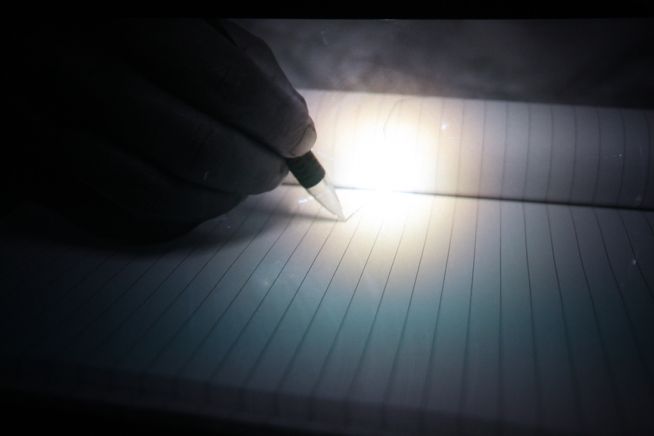

Overview
March Meeting, a slew of annual art talks that this year coincides with the Biennial, borrows from Yuko Hasegawa’s curatorial theme, public spaces. While Hasegawa looks to historical social spaces to model a 'new cultural cartography,' evoking courtyards from the Alhambra’s Court of the Lions to Chinese temple gardens in Suzhou, the March Meeting speakers reoriented this backward-glancing gaze toward the present and future.
Monica Narula from India’s Raqs Media Collective opened the talks, giving as her topic the somewhat hazily defined 'state of emergence.' Though alluding to political crowds taking to the streets today in Tehran, Cairo and Wall Street—what she termed 'global swarming'—she employed abstract and inaccessible terms to discuss these popular movements. She related the formation of a neighborhood with the formation of a coral reef and, sweepingly, to the structure and form of art, all under the broad category of self-organization.
Hu Fang from Guangzhou’s Vitamin Creative Space followed, returning to the realm of the concrete in his consideration of Chinese gardens as a model for art spaces, calling such spaces time-based and capable of teaching their visitors how to perceive processes. Without a final form, the garden resists consumption. 'When you breathe you touch part of a plant in your body,' he concluded.
Later in the afternoon, in a session entitled 'Art Practices and Institutions,' Kwok Kian Chow, the deputy chairman of Yellow River Arts Center in Yinchuan, China, spoke about creative industry and the need to look beyond traditional market-dominated structures. Bijoy Jain from Studio Mumbai Architects followed, lauding the process of making and the potential of craft to form collective associations.
On the second day of the Meeting, the highlight was a talk by Paulo Herkenhoff, the director of Brazil’s Museu de Arte do Rio, who pointedly asked if art was necessary when it reifies power and replicates facts. He evoked the spirit of Brazilian thinker Paulo Freire, stating that art’s purpose was to overcome suppression and help people to help themselves. Following, Patrick D. Flores, curator of the Vargas Museum in Manila, traced the history of geography and subjectivity in popular culture.
Artist Tiffany Chung from Vietnam next explained her artistic mapping as making uncertain objective claims. Dr. Edward Simpson, a social anthropologist from the School of Oriental and African Studies at the University of London, and Ashok Sukumaran from Mumbai’s CAMPcollective both spoke about the rewriting of orientalist fantasies through histories of shipping and the geography of ports.
The talks will continue on Saturday and Sunday.
Noelle Bodick is assistant editor at ArtAsiaPacific.
http://artasiapacific.com/Blog/SharjahBiennialReportMarchMeetingNotes
